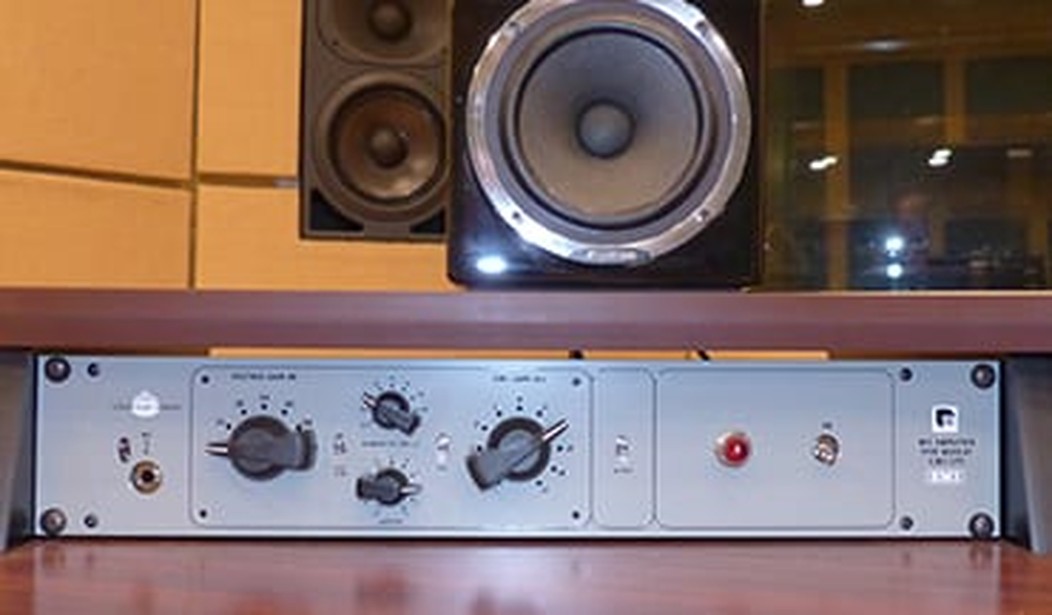The Beatles’ recordings are arguably the most dissected pop songs of all time. The studios they were recorded in, the instruments used, and the signal chain from the microphones all the way to the mixing desk above EMI’s Abbey Road Studio 2, where the Beatles did the bulk of their recording, have all been analyzed and written about to the nth degree. The microphones the Beatles used for their vocals were typically Neumann U-47 and U-48 vacuum tube microphones built in the 1950s, which their producer George Martin has written were his favorite microphones.
From January 1964 until November 1968, when Abbey Road Studios went to transistor-based pre-amps, these mics were almost always plugged into the tube pre-amps in the desk of the studio control room. That desk was called the REDD.51, and the pre-amps inside it were designated the REDD.47. REDD stood for Recording Engineering Development Department, EMI’s “skunk works” for in-house studio technology R&D and construction. In addition to their use as microphone pre-amps, in July of 1968, when John Lennon demanded a massively distorted electric guitar sound for a song he wrote called “Revolution,” Beatles engineer Geoff Emerick daisy-chained two of the REDD.47 pre-amps together, cranked up the gain, plugged in Lennon’s Epiphone Casino semi-hollowbody electric guitar, and created a roaring chainsaw tone that remains legendary to this day.
Since the early 2000s, Chandler Limited of Iowa has been issuing EMI-licensed and tested recreations of the components that graced Abbey Road Studios in the 1960s and ‘70s. In 2015, Chandler issued their reproduction of the REDD.47, employing a recreation of the unit’s two-tube pre-amp circuitry in a modern two rack-space unit, with a few added features for modern recording. On the spartan rear of the unit are XLR inputs and outputs, an input for the unit’s power cable and a fuse. On the front is a switchable 1/4-inch jack for an electric guitar or bass, and knobs for gain, rough output, fine gain set, and switches for an 20db pad, polarity, phantom microphone power, and the main power switch. There is also a switchable rumble filter for reducing unnecessary low noise, which will likely need to be high-passed out of final lead vocal anyway.
Inside the REDD.47 are two vacuum tubes (or “valves” in British parlance), an EF86 and an E88CC. So what does it all sound like? As Sound on Sound’s Hugh Robjohns wrote in his detailed review of the unit back in December of 2015:
Chandler’s REDD.47 is an impressive update on a revered ‘classic’. It’s almost unique, as there have been precious few hardware incarnations of EMI’s first modular amplifier until now. It has a very different character from that of Chandler’s other classic EMI preamp, the silicon-transistor TG2 preamp from the 1970’s-era TG console.
My impression from memory, is that the REDD.47 sounds larger but noticeably softer through the bottom end, whereas the TG2 is much more solid and ‘contained’. Both share a dynamic, punchy mid-range character, though, and the REDD adds a subtle but attractive grainy character at the top end. Overall, its vintage ‘valve and transformer’ sound character is quite evident, and very musically pleasing, yet this is no one-trick pony and its technical performance is perfectly adequate for modern recordings nearly 60 years on: it has the versatility to deliver fine, clean and delicate, or strong and colourful, character equally well. Perhaps this shouldn’t come as a surprise: it was, after all, originally designed to be used in consoles employed in Abbey Road’s classical Studio One as well as pop sessions in Studio Two!
Connecting my Peluso 2247SE mic, a modern-day clone of the U-47s so favored by George Martin into the REDD.47, and then into a Warm Audio WA-2A tube-based compressor, the result is a fat vocal tone that’s pretty awesome sounding. This isn’t a vocal tone possible from a Shure SM-58 into a typical “prosumer” audio interface’s generic mic preamp; this is something else; a tone that cuts through mixes without massive amounts of additional processing and EQ.
A word of caution: It’s easy to overcook the distortion on lead vocals; a little goes a long way to fatten up a lead vocal, unless you’re looking for an effect such as Lennon’s deliberately distorted lead vocal on “I am the Walrus.” Too much distortion can initially sound cool, but it can result in sibilance on S and F sounds (particularly after compression is added to the vocal) that can very difficult to remove or reduce later. It’s easy, and a much safer bet, to add additional distortion, either by re-recording the track through the REDD.47, or using a distortion plugin to obtain the final tone you’re looking for.
The REDD.47 is also an excellent direct injection (DI) unit for recording clean bass or electric guitar to be processed later with an amp-sim plug-in, and the unit’s EF86 tube (the same tube used in a Vox AC-15 guitar amplifier, which the Beatles also used during their early days) can result in a fatter tone going into the amp-sim, particularly on single-coil equipped guitars. But for many users, the real fun will be plugging an electric guitar in and cranking up the REDD.47’s gain. One REDD.47 used as a guitar distortion effect won’t get you into mammoth “Revolution” territory. But if you’re understandably not willing to spring for a second unit to recreate Emerick’s daisy-chain, all it takes is a guitar distortion effect plugged between the guitar and the REDD.47 with just a little extra added gain, and that magic yuuuge chainsaw tone is the result. I had an old Boss Turbo Distortion pedal left over from my college-era band days, and combined with 1959 reissue Gibson Les Paul, it did the trick perfectly.
Chandler Limited’s REDD.47 is an extremely well-made unit that is capable of serving as a highly-detailed microphone pre-amp, a bass or guitar DI interface, or a roaring fuzz machine. While its $2320 street price isn’t cheap, its vintage-style circuitry, combined with modern accoutrements on its control panel will be right at home in both pro studios and well-outfitted home project studios alike.










Join the conversation as a VIP Member